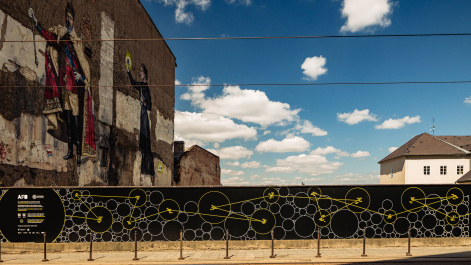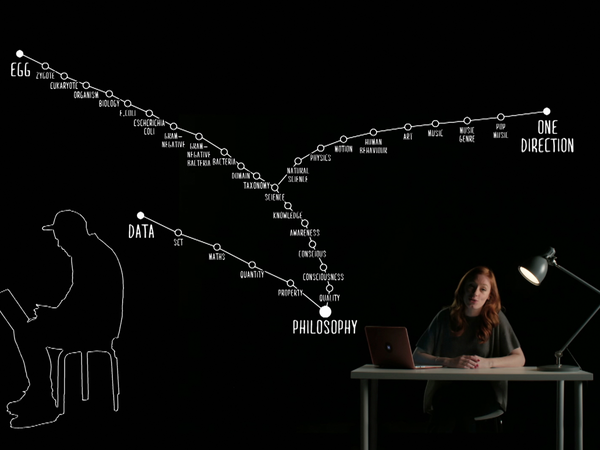Is it possible to transform data into art? The answer is being provided by the 56th International Festival of Science Documentary Films Academia Film Olomouc, starting this week. One section, called Imagine the Facts, is focussed on data visualisation and interconnected with the “Universum” exhibition at the Triennial of Contemporary Central European Art, this year’s largest event at the Olomouc Museum of Art.
Once again, this year’s AFO is taking place on-line. Until 11 May, about a hundred of the best popular science documentaries can be viewed on the platform www.watchandknow.cz. The festival programme is divided into two lines. The first one is dedicated to film; therein compete the best science popularisation documentaries from the last two years. The second one consists of non-competitive sections, where AFO tries to present and scientifically explain urgent social phenomena through films and lectures as well as video games, literature, and exhibitions. “This year we are focussing on the theme of data visualisation and its use in science and art, which is featured in the Imagine the Facts thematic section,” explains AFO Director Jakub Ráliš.
The visualisation of raw data in graphs, maps, and art projects does not just stop at transcription. “It’s the process of searching for information, combining it, interpreting it, and visually processing it. Even the artists experience an exciting creative story full of uncertainty because they never know in advance what information they will be able to obtain and what its final shape will be,” says Barbora Kundračíková, the main curator of the Triennial. “We explore visualisation as a useful tool, but we also perceive its negatives – secondary phenomena such as visual noise or even smog.”
Four documentaries are featured for those interested in this festival section. For example, Eva Szasz’s Cosmic Zoom from 1968 or Unknown Fields: Madagascar – A Treasured Island. In addition, three video performances connected by an interview with Australian digital artist Andy Thomas, the author of Visual Sounds of Amazon, will be presented. Another part of the programme is a crash course in creating graphs and visualisations from raw data with data journalist Kristina Zákopčanová.
Although this year’s AFO is virtual again, thanks to collaboration with the Olomouc Museum of Art, the Imagine the Facts section will partly enter the real world and partly augment reality. The meeting place for debates and the fusion of reality and virtuality will be the 30-metre fence by the Museum of Art – the location of the planned Central European Forum Olomouc (SEFO) – in the city centre.
The wooden fence features an interactive installation on the boundary of science and art, created by AFO graphic designer Matěj Vázal. Only one half of the visual experience is accessible to the naked eye; the entire content can be viewed only by means of augmented reality (AR). The viewers have to download Artivive, a free app, on their phones and then point the camera lens at the bubbles on the fence. This will enable them to see a selection of science projects and artworks on the theme of visualisation. They include isotypes by Otto Neurath, land art projects by Agnes Deneés, and futuristic installations by Stano Filko. One of the highlights is an original installation by Attila Csor̈gő, which is being created virtually for the spot and will be transferred from the virtual environment into the real one in May.

The fence will thus cease to fulfil its original function as an advertising space and become an entrance to a new world – of data, information and experience, scientific and artistic projects, and exhibitions. The result will be the AFO-SEFO outdoor gallery, open 24/7. “AFO will be immediately followed by a programme that is a direct part of the Triennial of Central European Contemporary Art, which starts on 24 June 2021,” says Barbora Kundračíková. This is when the fence will become a gate open to visitors. “The breaking of the iconic fence is a crucial moment of the Triennial – the empty lot will be used to create a summer SEFO scene dedicated to the formation of public space, in which, in addition to AFO, many other cultural entities operating in Olomouc, including the city itself, will participate. This will be followed by Dan Gregor’s intervention called Silent Scream. Owing to all these activities, this place will hopefully turn into a genuine forum,” says Kundračíková.
